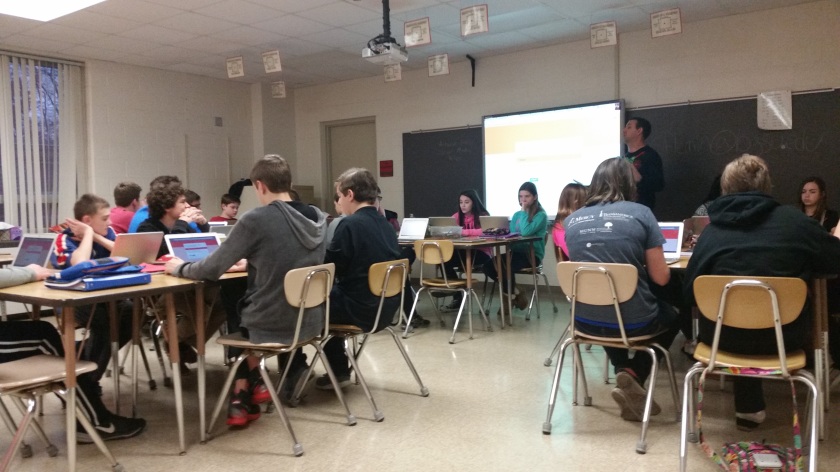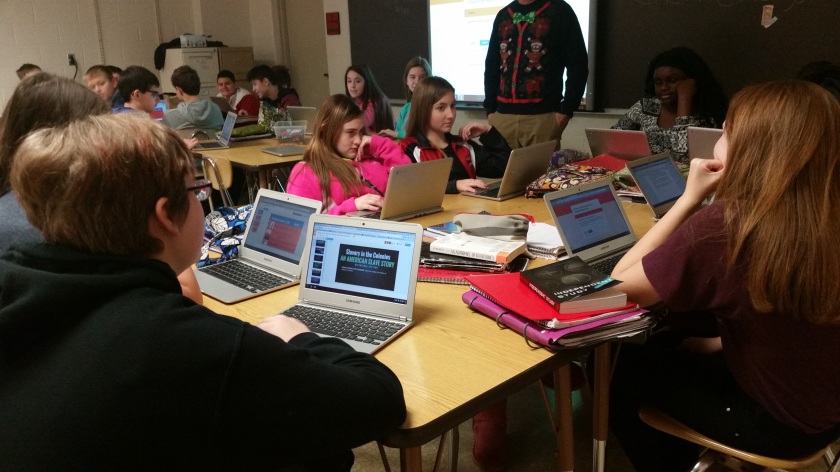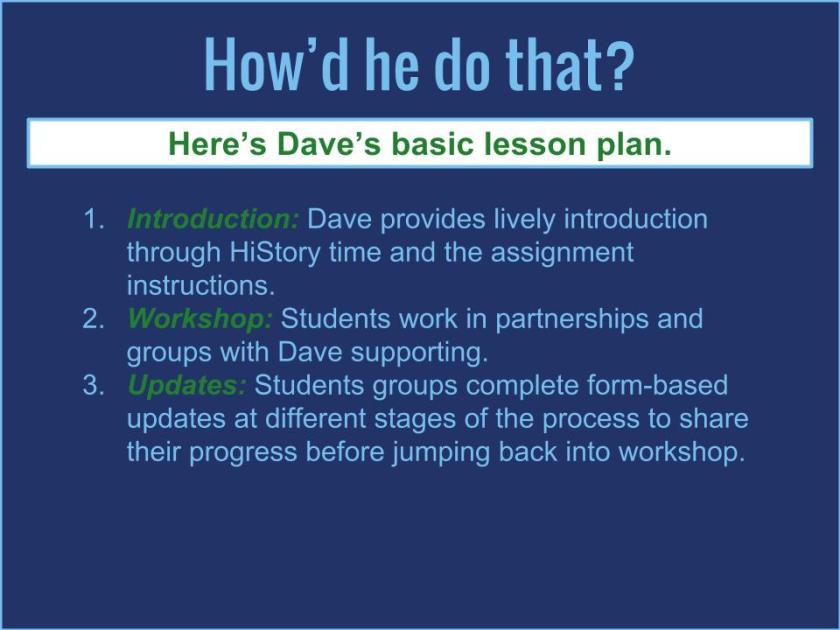At McCord Junior High School, Dave Budas looks at his eighth graders exactly as one should look at history: as a series of diverse voices and experiences. Just as no one person or group should define a nation’s identity, no one student defines this social studies class. Because of that, Dave has worked for years to refine a teaching approach that allows for students to explore information at their own pace, either individually or collaboratively. He has left the history lecture in the past to create a workshop environment where students explore the periods of American history and the experiences they offer. Today, that experience is the tragedy of slavery.
Today’s content standard reads, “Trace and explain the history of slavery in America.” Over the course of the year, Dave hopes that his students will come to understand the slave experience through the literary genre of slave narrative. It’s a pretty common approach, as teachers feature slave narratives in their curricula at many levels, but instead of merely asking students to read these narratives, Dave is asking them to write their own.

The class begins with Dave’s foundational Google Slides presentation, which he has designed as not only a set of instructions, but a library of resource links and examples for students to use as they proceed. This presentation appears teacher-centered, but it is functionally student-centered. Students have access to it on their Chromebooks, and they will use the presentation to review and understand concepts, research facts, and begin their narrative. Dave takes little time in running through the presentation file before he turns the work over to his class.
And when that work begins, student energy takes over. Some students work in partnerships. Others work in larger groups. Some partnerships separate themselves to work without distraction, other groups connect into mega-groups. An initial criticism of this approach may focus on the time off task generated by the loose framework, but continued observation shows that not to be the case. The jokes and smiles shared by students in slight distractions always give way to conversation about the ideas themselves. Some students debate the name to give to their protagonist, using resources to find appropriate ones. Others discuss the plot development. Some examine maps to find their grounding a real-world setting. The class is a bundle of collaborative energy, and what’s beautiful about the energy is that work combines with fun. These students are enjoying themselves.

The balance of work and fun is accomplished through Dave’s careful work. Even though he takes a step back during the development process, his work to develop the environment for learning is clear. Student learning in a 21st century world happens when an educator creates an environment for students to explore content guided by a clear task, a problem or product. That educator then steps back and lets students explore with the assistance of Internet resources and peers. He or she steps in to provide formative feedback and answer questions, but the energy comes from the student. In that way, the learning experience is meaningful, authentic, and effective. Daily access to the Internet makes this environment possible in a way not possible before, and students working together with Chromebooks can be guided by Dave’s framework and appeal to help on their own terms. Dave is working hard to create that environment, and his students are bouncing through it playfully.
The slave narrative project will continue over the coming weeks. On workshop days, students will share what they’ve developed for Dave’s feedback and continue to refine the product until the due date. By the time the project has concluded, students will have experienced a small amount of the ownership and pride historical slaves felt over their own narrative works.
Check out these links for more information!

